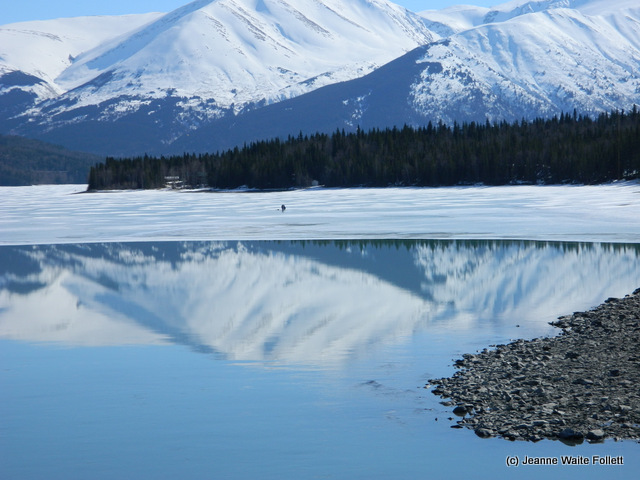I know, I know. It's been a long time since Part One of Doing Delhi in a Day. My excuse? It's summer in Alaska, a sometimes fleeting experience and one not to be missed.
Ch. 37, Doing Delhi in a Day, Part Two
Be the change you want to see in this world and feel proud to be an Indian. Happy Republic Day--
Message on a greeting card
I'm going to fudge a bit with this Doing Delhi in a Day. Some of these things we saw the following afternoon, but it's appropriate to include them with the New Delhi activities, because the next day on the trip, we are going to Old Delhi, and THAT is special.
So continuing on with New Delhi, we drive through some beautifully landscaped avenues.
 |
| Note the monkeys near the hedge on the right. |
 |
| A line of pigeons on the line. |
 |
| A bit of traffic. |
 |
| There are very few malls in India, because they are too expensive for the average person. Instead, most people purchase their groceries from street-side vendors. |
 |
| Taking a break. |
 |
| Making a living shining shoes. |
 |
| Making a living digging in the dirt. |
 |
| Kind souls feeds the pigeons. |
I notice how clean everything is. Then I see sets of parallel bars on the sidewalks and shoulders, much like cattle runs.
They ARE cattle runs, for human cattle. Turns out, New Delhi is expecting company and was sprucing up the Raj Path, the ceremonial boulevard on which the Republic Day parade is held on January 27 annually. The guest of honor for this year? US President Barack Obama.
Republic Day marks the anniversary of when the Indian constitution came into force following independence from Britain in 1947. Those cattle runs line the streets of the parade route.
The coach creeps past the India Gate so we can get a glance. This is India's equivalent of Paris's Arc de Triomph. It's a war memorial for the 82,000 men of the British India Army that perished in WWI and the following Anglo-Afghan war. It is also the memorial for India's unknown soldier.
Because of the preparations, we were not able to walk up to the India Gate, hence my crummy photo. Below is one I found on the Internet.
 |
| A clear-weather photo of the India Gate from Wikipedia. This photo is taken from the opposite side of the one I took. |
Likewise with the government buildings. We couldn't even drive past them, so the driver parks our coach and many get off to walk down a block to see the building. I stayed on the coach and kept my horrid cold company.
The famous B'nai Lotus Temple is in another part of New Delhi. It has received many architectural awards and is reminiscent of the Sydney Opera House with its 27 freestanding white marble-clad petals over an interior hall that can hold as many as 2500 people. It is surrounded by acres of grass and gardens, and --out on the street--hawkers.
Not me, I decide, I'm not getting near any of those hawkers. I remain on the coach and take my photos in peace.
 |
| That is either incense or Buhach burning in that pan. |
We head back to the Taj Hotel. I'm in the back row, as usual, leaning against the window when the coach stops in traffic. Holy Moly! Before my wondering eyes, what should appear but a naked man!
Our guide Dinesh quickly explains that the naked man belongs to a sect of Jainism and that he is either a saint or aspiring to be a saint. The Jain religion is ancient, and is the oldest religion in India.
Jainism carries asceticism to its furthest extent. Believers try to live a life of harmlessness and renunciation. Its tenets teach non-violence to everything, with a hierarchy ordered to humans, animals, insects, and then plants. Being lacto vegetarians, the Jains will not consume even dairy products if the making of that product caused pain to the source of the ingredients.
They don't eat root vegetables such as potatoes, believing that because the tubers have the ability to sprout, it is a living being.
And, of course, they believe in chastity, with the saints practicing celibacy.
For more information on Jainism, follow the link below. As for me, I'm heading back to the hotel and to bed. Tomorrow is a big day.
http://prasadjain.hubpages.com/hub/Jaina_nude_saints







































